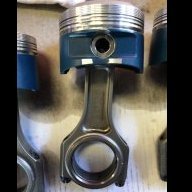Ffs Rb30Det Issues!
Announcements
-
Similar Content
-
Latest Posts
-
By soviet_merlin · Posted
Neat, thanks! There's a Walbro 460 in there currently and it has never bothered me. If it's not getting any worse I'm fine with that. Murphy's law is inviolate. So don't you worry, I've got you covered. I filled up the tank just that morning on the way home. It's about as full as can be. I'm not going to touch it though. The car will go to Unigroup to get it done properly. See how it goes. -
I open the bonnet of a French people mover and see a VQ - it's no longer Japanese! VR is short for VQJr
-
nah, sounds too easy
-
VQ started in 94 so started as Japanese before things went wrong haha.
-
Do you want to come do the fuel pump in my Skyline Duncan? It'll be a pleasure for you, as the middle of winter is still about 19c in the middle of the day, and the fuel tank is bone dry... 😛
-






Recommended Posts
Create an account or sign in to comment
You need to be a member in order to leave a comment
Create an account
Sign up for a new account in our community. It's easy!
Register a new accountSign in
Already have an account? Sign in here.
Sign In Now